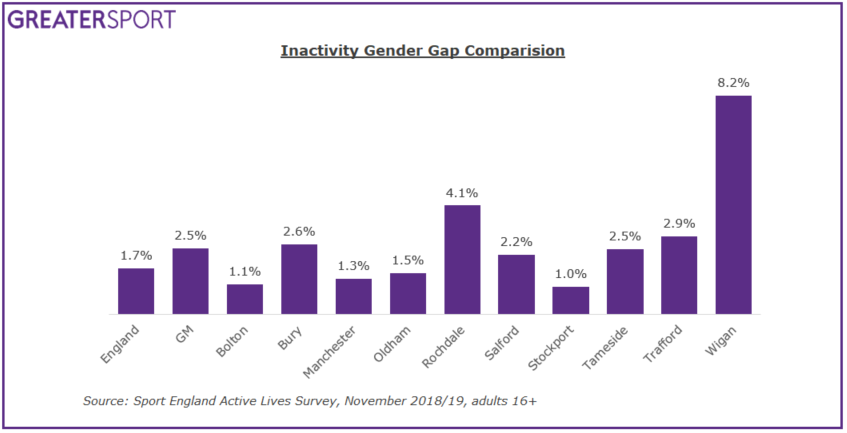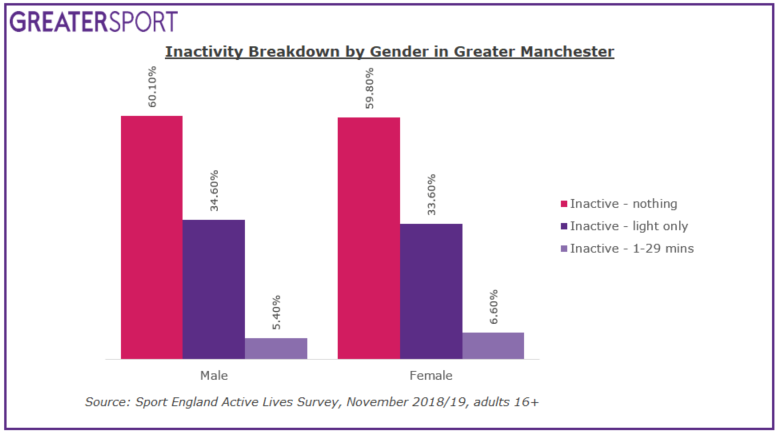Greater Manchester Activity Levels Nov 18-19: Gender
A detailed breakdown of the latest Active Lives research into the difference in activity levels across genders in Greater Manchester.
A number of inactivity inequality gaps exist and whilst they may have narrowed, to varying degrees, across Greater Manchester (GM) we can still see clear gender, age, disability, socio-economic status and ethnicity gaps. Many of these factors overlap and further compound the differences.
In the latest Active Lives release the inactivity gender gap in GM is 2.5% which is larger than the England gap of 1.7%, the gap is also closing at a slower rate than across England as a whole. In GM the inactivity gender gap has shrunk by 0.6% since baseline (November 2015/16) whereas nationally it has shrunk by 0.8%. Across GM there are noticeable differences between the ten boroughs with the gap varying from 1.0% in Stockport to 8.2% in Wigan and overall four of the boroughs have a wider inactivity gap than England. It is important to note that Bolton bucks the trend and of the ten boroughs is unique in the fact that male inactivity is higher than inactivity amongst women.

Gender: A breakdown
Inactivity levels amongst women is 27.3% whereas amongst men the inactivity levels are 24.8%. Furthermore when inactivity is broken down both men and women have similar levels of individuals doing no physical activity, 60.1% and 59.8% respectively. Meanwhile, men are slightly more likely to have only taken part in light physical activity, 34.6% compared to 33.6%, whilst women have slightly higher rates of doing 1-29 minutes of physical activity, 6.6% compared to 5.4%.

Gender and other factors
It is important to note the relationship between gender and other groups such as age and long term health conditions. The gender inactivity gap is amplified with age; for those aged 16-40 the gap is 1.3% between males and females, however for those aged over 61 the gap is 6.9%, over five times larger. A similar pattern can be seen when looking at disability, the gender inactivity gap amongst those with no disabilities is just 0.6% compared to 4.1% amongst those with disabilities.
More information on the latest Active Lives release can be found here.
If you want to find out more about engaging women in physical activity take a look at Women in Sport’s website. Find out more about the relationship between gender and physical activity here.
